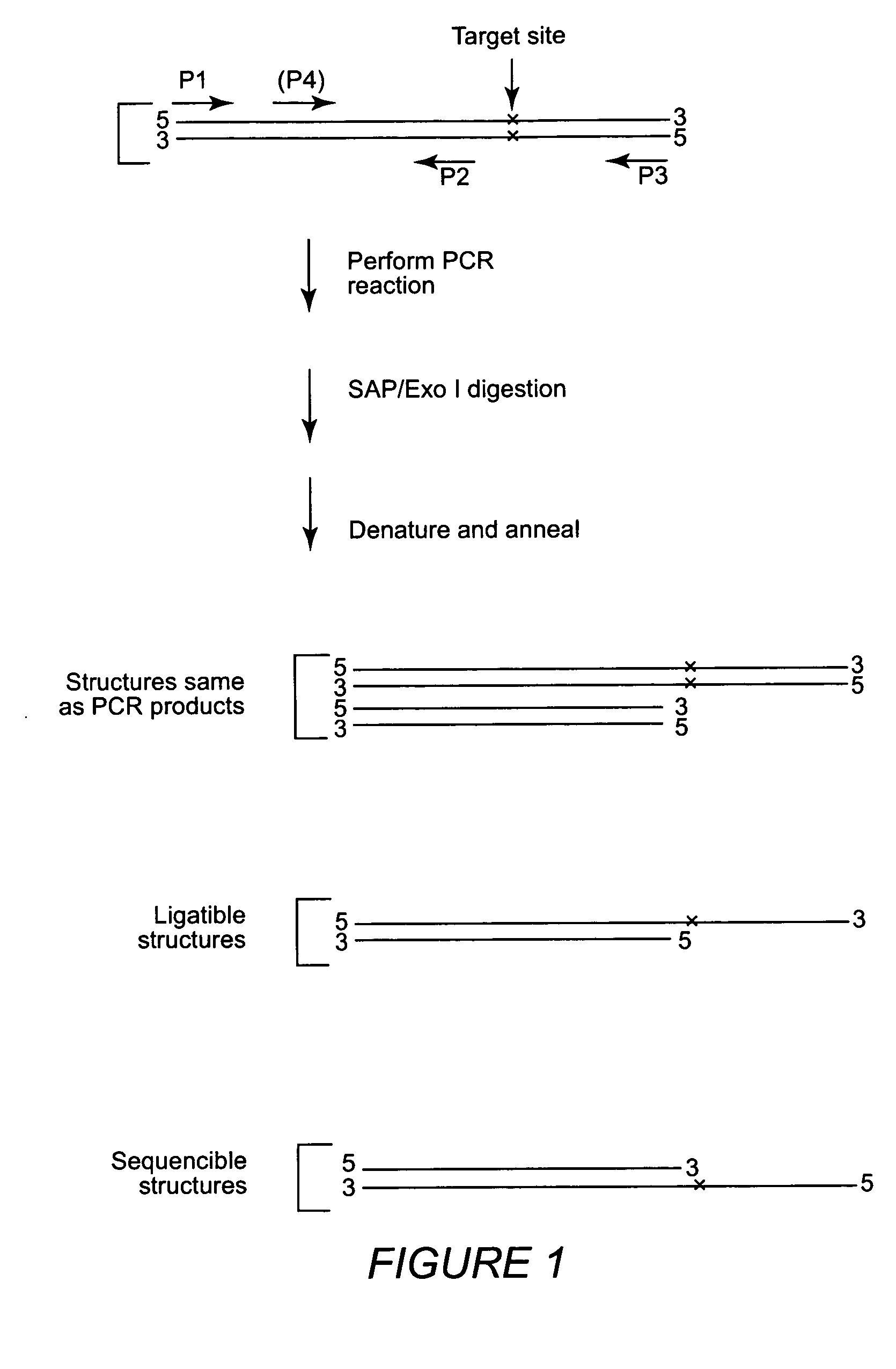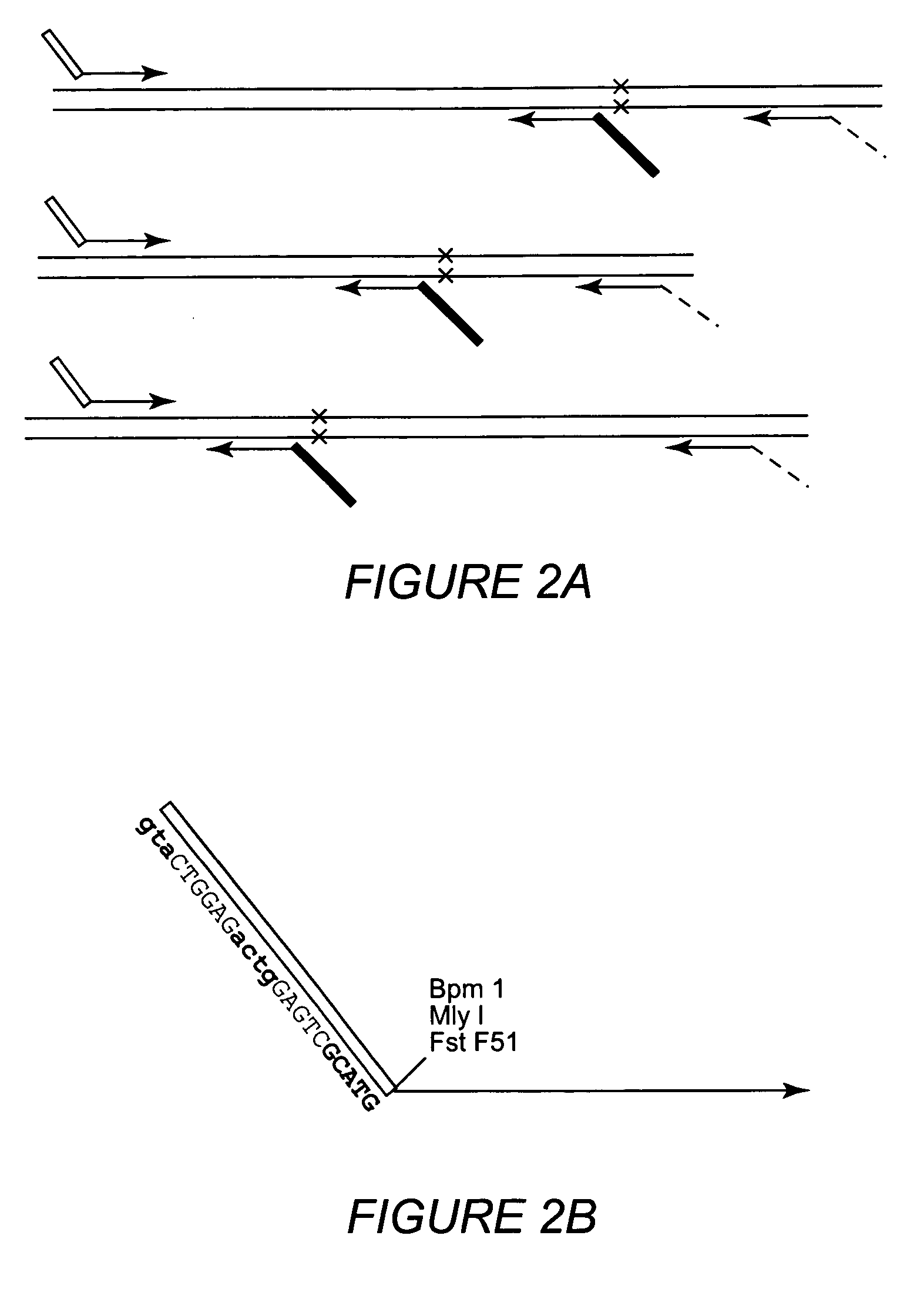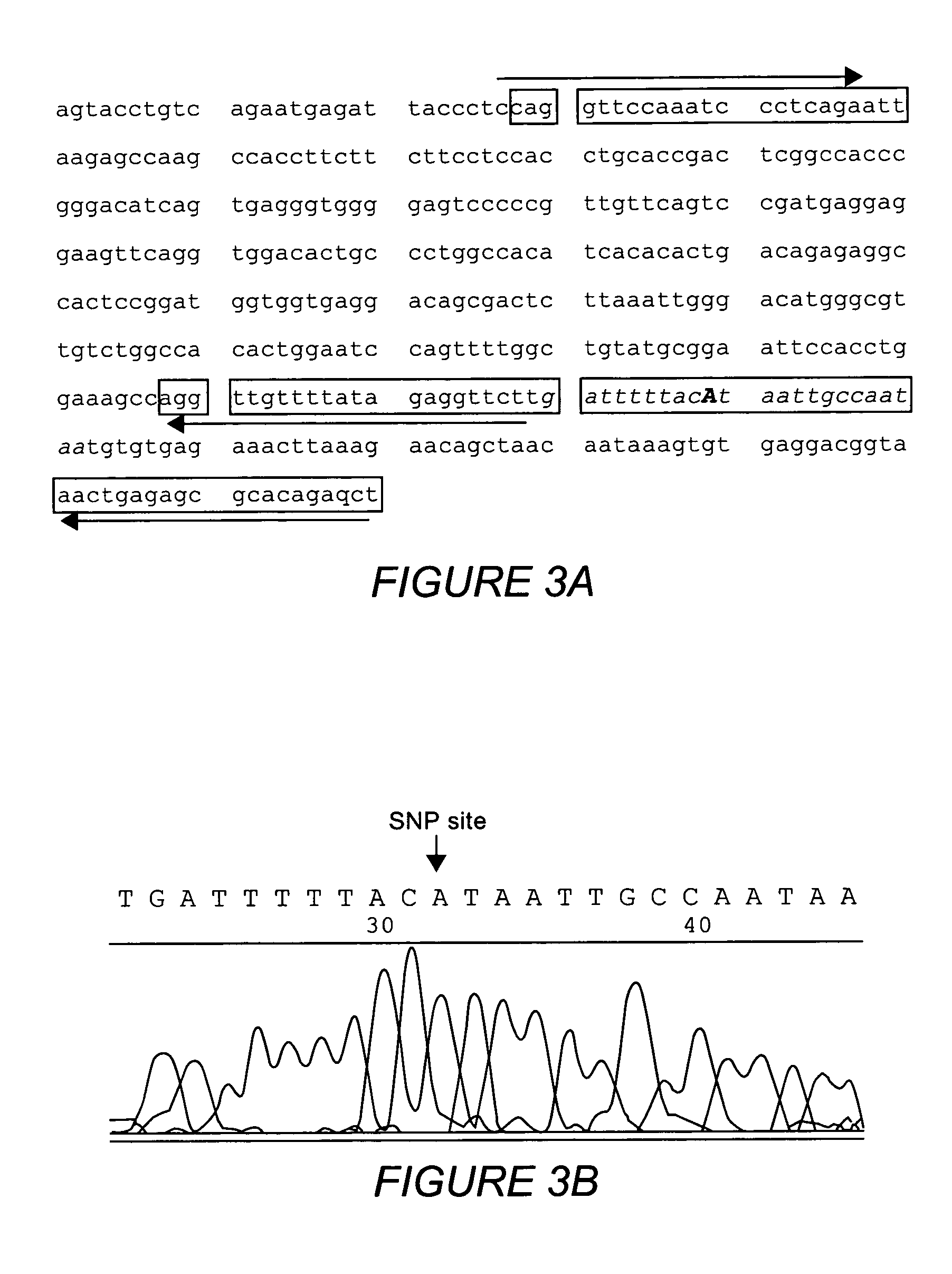Multiple sequencible and ligatible structures for genomic analysis
a genomic analysis and sequencible technology, applied in the field of single nucleotide polymorphism (snp) genotyping, can solve the problems of increasing throughput and decreasing cost, major problems remain unsolved, and large-scale projects will become prohibitively expensive, so as to increase throughput and reduce cost. , the effect of high cost effectiveness
- Summary
- Abstract
- Description
- Claims
- Application Information
AI Technical Summary
Benefits of technology
Problems solved by technology
Method used
Image
Examples
example 1
Formation of Sequencible Structures
[0068] Sets of nPCR primers were designed as described to amplify DNA fragments from six markers of human chromosome 6 and individual nPCR was performed using Taq-Gold DNA polymerases. Clean-up digestion was carried out using shrimp alkaline phosphatase and E. coli exonuclease I (37° C. 1 hour) After the clean-up digestion, a high temperature denaturing (95° C. for 15 min.) was performed and the samples were allowed to cool to room temperature. A sequencing reaction was performed using standard sequencing kits but without sequencing primers. Sequencing reactions were performed either: 1) under standard cyclic sequencing program: 25 cycles of 96° C. for 1 min., 50° C. for 15 sec. and 60° C. for 4 min; or 2) using this condition: 25 cycles of 96° C. for 1 min., 80° C. for 4 min. The purpose of these experiments was to test whether a sequencible structure formed after denaturing and reannealing of the outer and inner PCR products together. If we obta...
example 2
Creating Sequencible Structures with Products from Extendase-Free Pfu DNA Polymerases that can be Used for SBE Genotyping Reactions
[0071] The variations of starting position of the obtained sequences (Example 1) suggested that the positioning of inner PCR primers alone may not be sufficient to obtain sequencible structures with precise extending ends. An alternative is the use of extendase-free DNA polymerases that do not add the 3′ A base at the ends of PCR products. Thus, experiments were carried out using Pfu DNA polymerases which have been reported for lacking the extendase activity (10, 28). Inner PCR primers were designed so that their products would be positioned right before the polymorphic site if the products formed sequencible structures. Inner and outer PCR reactions were performed separately using Pfu DNA polymerases and the products wqere pooled together to form the sequencible structures. Then a SBE reaction was performed using SNaPshot kit from Applied BioSystems. S...
example 3
Control of the Reading Length for Multiple Target Sequencing
[0073] The reading length of sequencing reactions is principally determined by the ratio of dNTPs / ddNTPs. For typical sequencing applications, long sequence reads are obtained by using a high dNTPs / ddNTPs ratio (100:1) provided in commercial sequencing kits. In the practice of the present invention, a short stretch of DNA surrounding the SNP targets will be sequenced. For this purpose it is desirable to control the length of sequence reads so that multiple sequencing reactions can be loaded in one lane / capillary without overlapping each other. Currently there is no commercially available kit for this purpose, but two products, the SNaPShot from Applied Biosystems and the SNuPe from Amershan Biosciences, have the potential to be modified for this purpose. Both these kits were designed for SBE reactions, containing only dye-labeled ddNTPs. The concentration of nucleotides in the mix is proprietary.
[0074] Individually availa...
PUM
| Property | Measurement | Unit |
|---|---|---|
| melting temperature | aaaaa | aaaaa |
| temperature | aaaaa | aaaaa |
| length | aaaaa | aaaaa |
Abstract
Description
Claims
Application Information
 Login to View More
Login to View More - R&D
- Intellectual Property
- Life Sciences
- Materials
- Tech Scout
- Unparalleled Data Quality
- Higher Quality Content
- 60% Fewer Hallucinations
Browse by: Latest US Patents, China's latest patents, Technical Efficacy Thesaurus, Application Domain, Technology Topic, Popular Technical Reports.
© 2025 PatSnap. All rights reserved.Legal|Privacy policy|Modern Slavery Act Transparency Statement|Sitemap|About US| Contact US: help@patsnap.com



